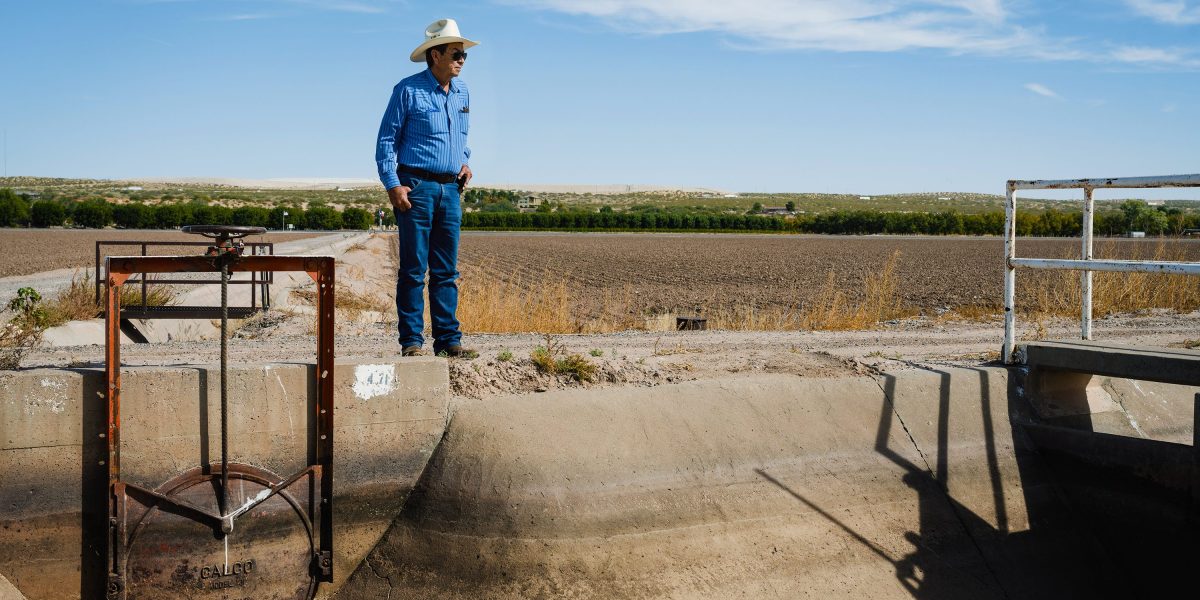About 20 miles outside El Paso, Texas, on a warm afternoon just before the fall harvest, Ramon Tirres Jr. turns his truck between two fields covered in nothing but dirt. Both should be lush with cotton by now, but these 70 acres—a fraction of the nearly 1,000 that Tirres left unplanted this year—are bare. All told, about two-thirds of his cotton fields lie empty.
Tirres has been farming here for 47 years. His pecan trees love the heat, and the soil in the valley where he farms is fertile. But without water, everything falls apart. And the past few years have been especially dry.
Most of the water that Tirres and his neighbors use on their crops arrives via the Rio Grande, a river that snakes from the mountains in southern Colorado through New Mexico and along the Texas-Mexico border. But in years like this one, when there’s not much snow and rain, water is in short supply. Tirres can pump groundwater to make up some of the difference, but it’s expensive, and not all fields have pumps.
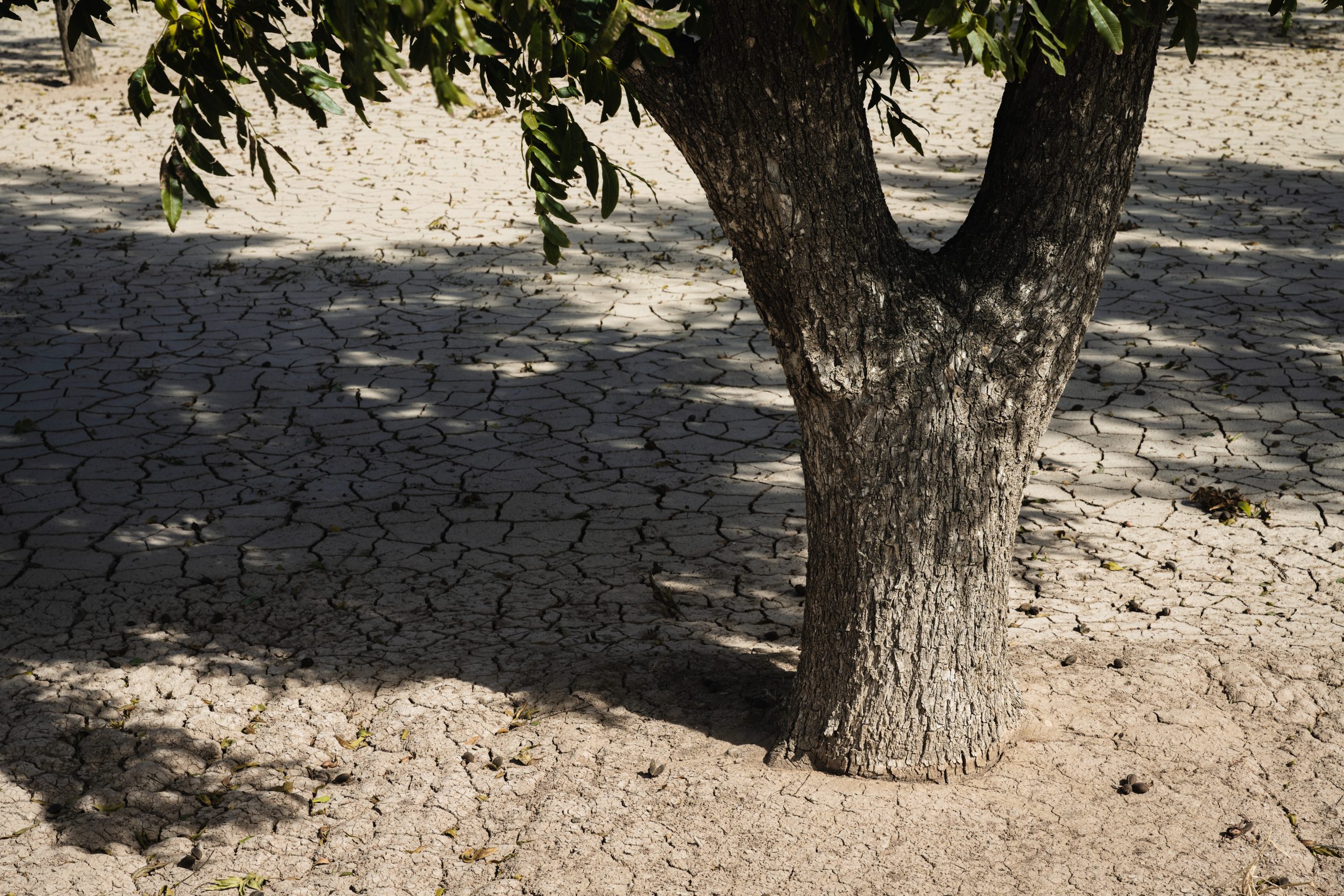
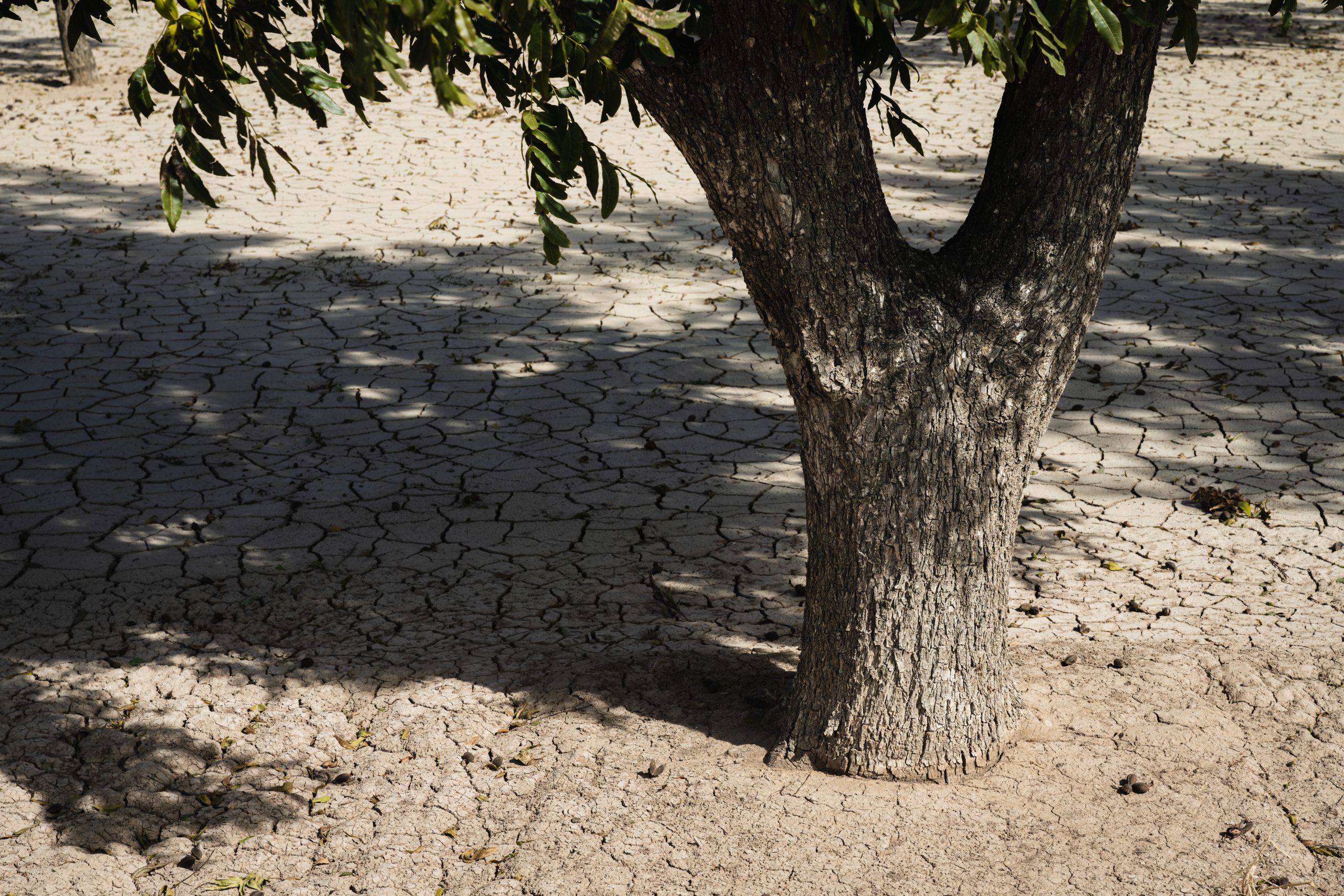
JUSTIN HAMEL
Farmers like Tirres have been among those hit hardest by water shortages affecting the region. Their predicament may not seem surprising given where they are: El Paso juts into the Chihuahuan Desert from the western tip of Texas. While annual rainfall across the US averages about 30 inches, El Paso gets under nine.
But El Paso has long been a model for water conservation. The city of 700,000 people has found a way to exist, and even thrive, in the desert. Other cities have for years looked to El Paso for solutions as population growth and climate change stress water resources worldwide.
El Paso has done all the right things—it’s launched programs to persuade residents to use less water and deployed technological systems, including desalination and wastewater recycling, to add to its water resources. The city has invested hundreds of millions of dollars in these adaptations and earned an international reputation for its planning. A former president of the water utility once famously declared El Paso “drought-proof.”
Now, though, even El Paso’s careful plans are being challenged by newly intense droughts. As climate change accelerates and cities everywhere scramble to adapt, it’s clear that technological solutions can improve quality of life in water-stressed places and prevent people from being displaced. However, every new measure comes at a cost, and all of them risk leaving people out. As the pressure ratchets up, El Paso, and places like it, force us to ask just how far adaptation can go.
Like a ring in a bathtub, a stripe in the rock marks the history of water in the Elephant Butte Reservoir, an artificial lake created by the Elephant Butte Dam and tucked into the mountains about two hours’ drive north of El Paso. Snowmelt from mountains in Colorado flows here before being released down the river. Portions are then distributed by the US Bureau of Reclamation to different groups, called irrigation districts, in New Mexico and Texas. Eventually, some makes its way to fields like Tirres’s.
Today the water level is far below the stripe; exposed rocks and the dam rise hundreds of feet on every side. In October, the reservoir held only about 5% of its capacity.
To support MIT Technology Review’s journalism, please consider becoming a subscriber.
Elephant Butte has provided the river basin to the south with a mostly steady supply of water for over 100 years. But “you can have a really long stretch of really bad years, like we’re having right now,” says Ben Kalminson, the power plant supervisor at Elephant Butte. When that happens, the reservoir empties out.
Between January 2020 and August 2021, the southwest US endured a historic drought. Only about 17 inches of rain fell across the region; the 20-year average is 24 inches. According to climate models, there’s about a 2% chance of having as little rain in any given year as the amount that fell in 2020. In other words, the 2020 drought was a one-in-50-years event, says Isla Simpson, a climate researcher at the National Center for Atmospheric Research.
She says there’s no evidence that climate change caused the lack of rainfall. Dry spells happen every once in a while. Add heat into the mix, however, and both the drought’s magnitude and the role of climate change become more obvious.
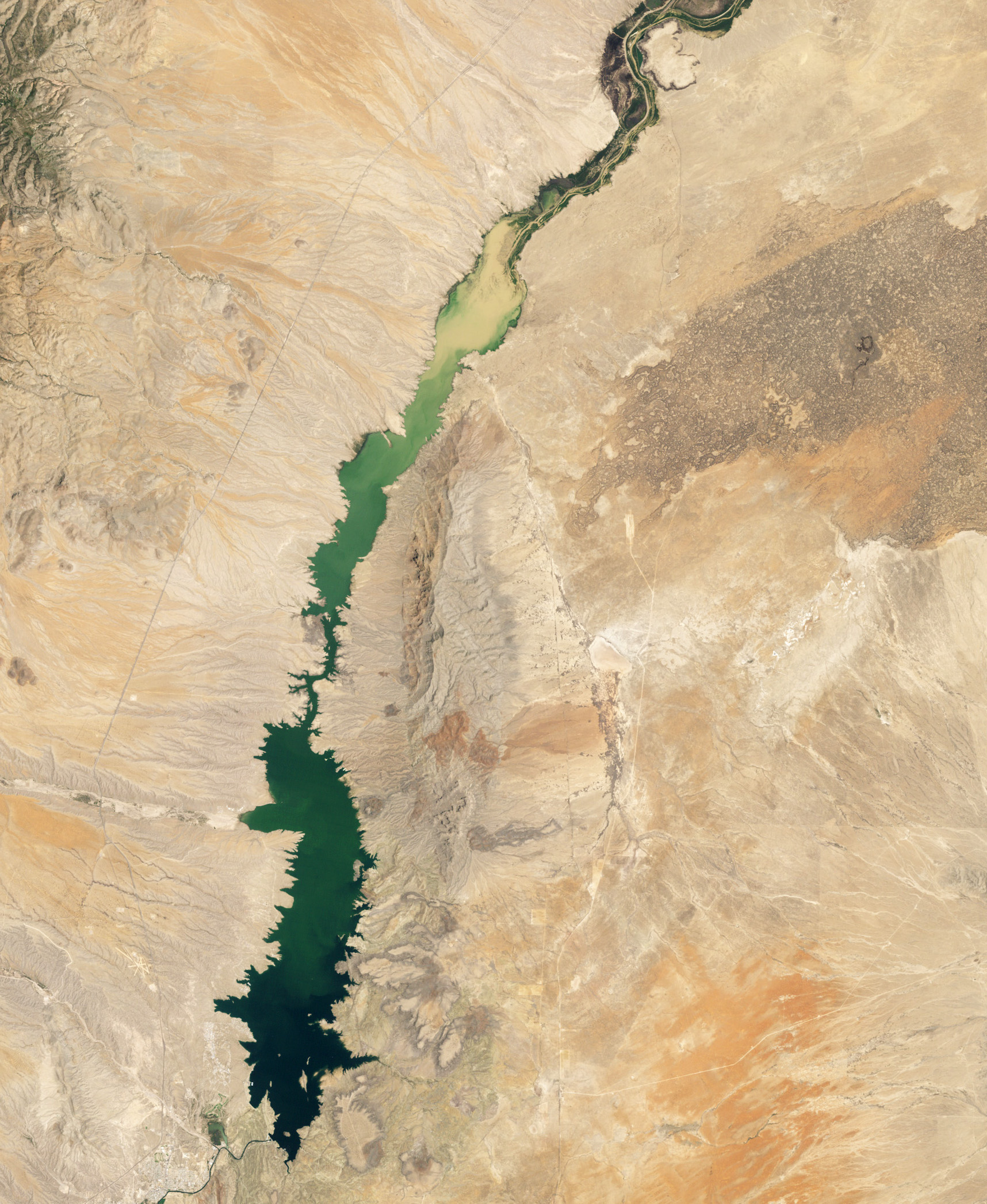
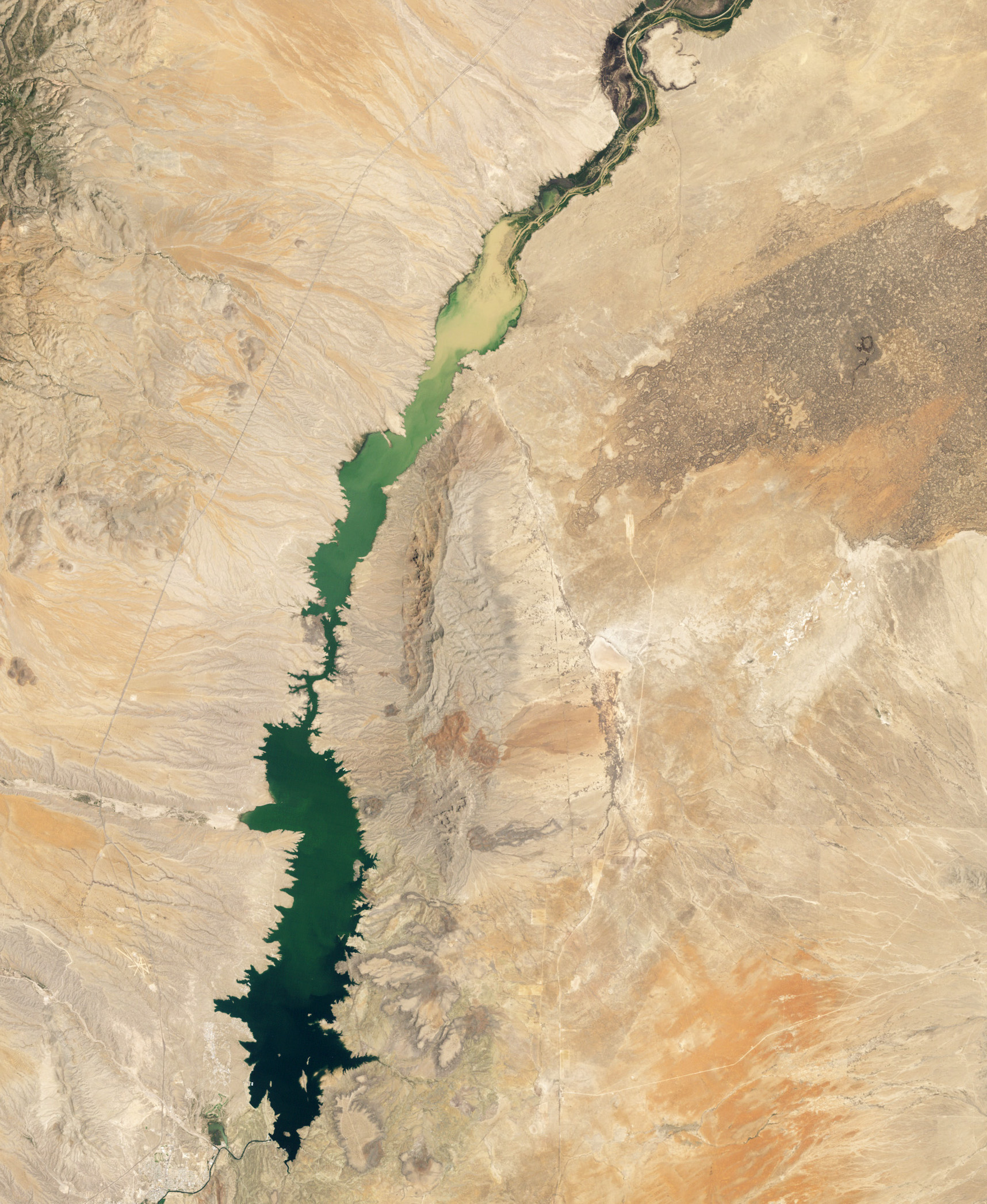
JESSE ALLEN AND ROBERT SIMMON / LANDSAT / NASA
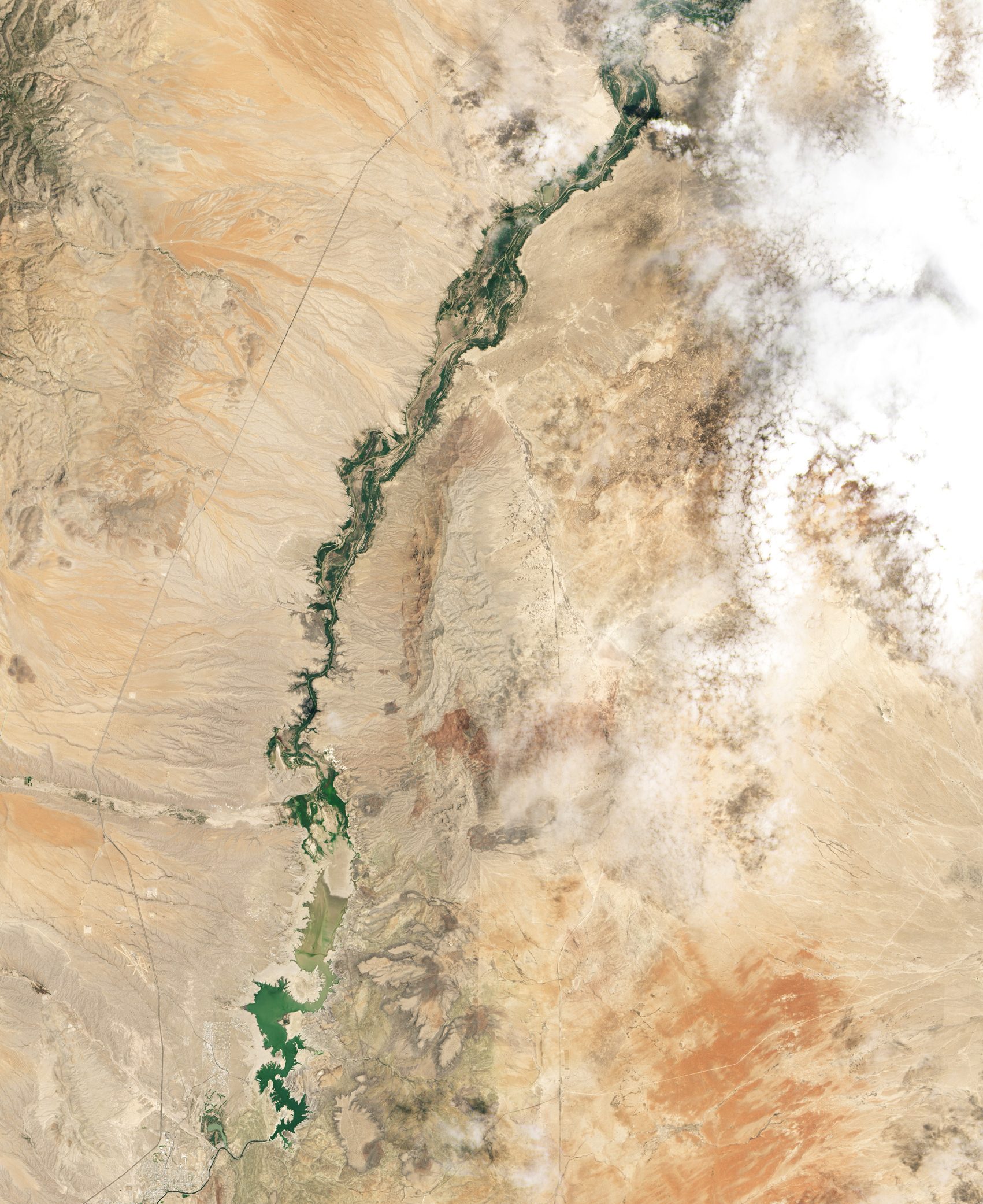
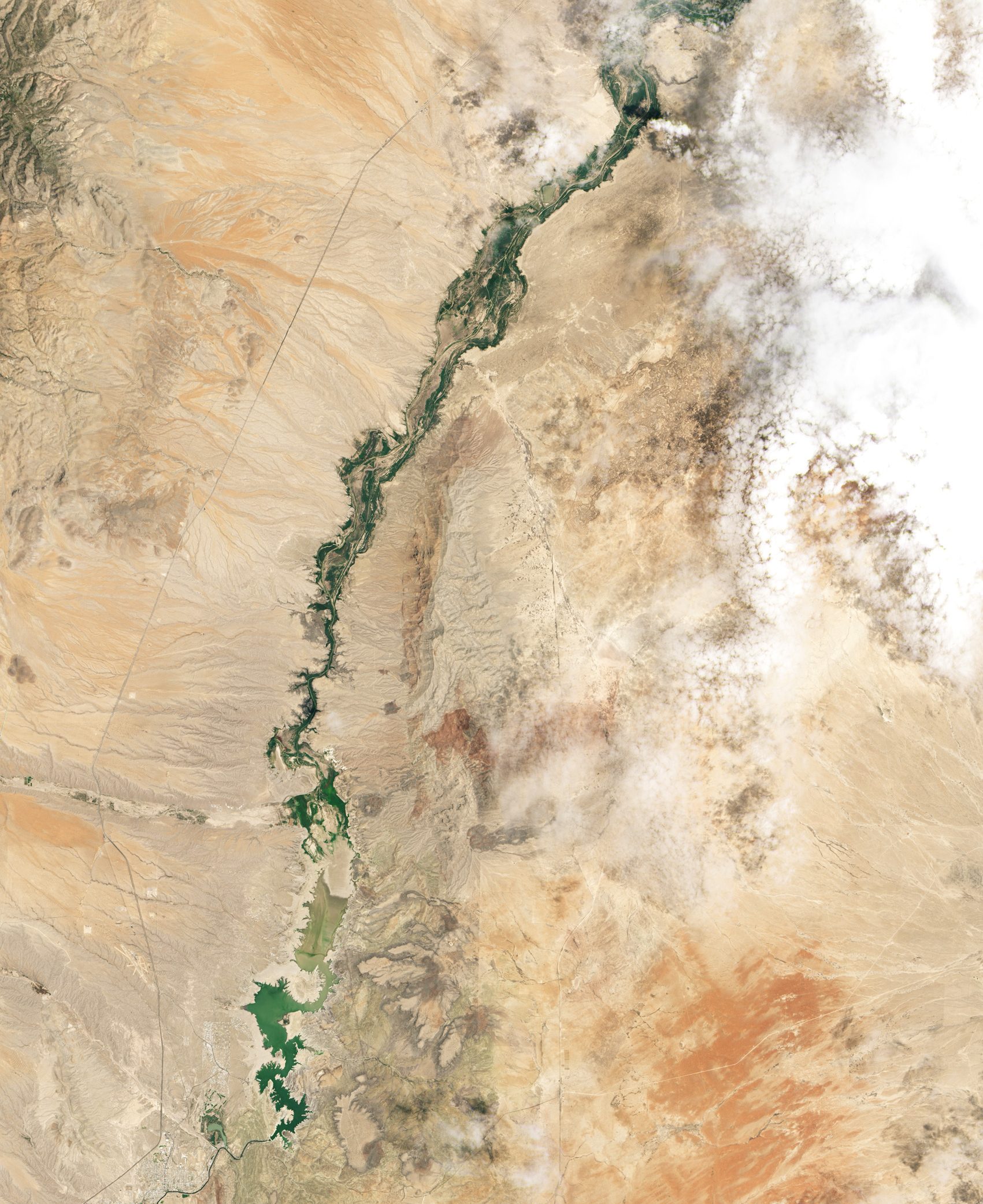
Between June 1994 and July 2013, drought severely affected water levels in the Elephant Butte Reservoir, the results of which are visible in these before-and-after satellite images.
Since hot air holds more moisture than cold air, more water will evaporate if the temperature is higher. One way to measure this effect is through vapor pressure deficit, or VPD, which is the difference between how much water vapor the air could hold and how much is actually there. A high VPD means the air is hungry for moisture, and a drought’s effects are likely to be worse: water evaporates more quickly from rivers, lakes, soil, and even plants.
There’s only about a 0.4% chance in any given year of the VPD levels that struck the Southwest in 2020, according to climate models, making it about a one-in-200-years event. And it simply would not have happened when it did without climate change, Simpson says. High VPDs will become more common as temperatures rise—the levels seen in 2020 will become a one-in-10-years event in the Southwest by 2030. “We’re really at the point now where we can start to see these climate-change signals in the real world,” Simpson says.
While farmers rely on the Rio Grande for irrigation, much of the water that El Paso’s residents drink actually comes from aquifers deep below ground. These critical water sources are also in jeopardy.
In 1979, the Texas Water Development Board projected that El Paso would run out of groundwater by 2031. At that time, each resident was using, on average, over 200 gallons of water per day. Most of that water was being pulled from the city’s two aquifers—the Hueco Bolson to the east and the Mesilla Bolson to the west.
For the next two decades, the water utility launched a campaign encouraging residents to use less water by, among other things, replacing their lawns with native plants. Today, average water use is down to 134 gallons per person per day. That’s still higher than the US national average of 82 gallons but lower than usage in some other places in the country with similarly dry climates, like Arizona (145 gallons) and Utah (169 gallons).
The aquifers are in better shape as a result—somewhat. “The water level is dropping, but it’s not dropping like a rock,” says Scott Reinert, the resources manager of El Paso Water. Still, more water is coming out of the aquifer than going back in.
El Paso Water pumps between 40,000 and 50,000 acre-feet of water from the Hueco Bolson every year and replaces about 5,000 acre-feet annually. (An acre-foot is an unwieldy unit of measurement used by water utilities—it’s enough water to cover an acre of land, or just over half a soccer field, with a foot of water.) There’s also some natural recharge from other groundwater and the river, but it’s likely not enough to keep up with pumping.
“We’re really at the point now where we can start to see these climate-change signals in the real world.”
El Paso Water plans to keep pumping from the aquifers for at least the next 50 years. But some researchers think the Hueco Bolson could be exhausted sooner, especially because El Paso isn’t the only city depending on it.
The city of Juarez, Mexico, hugs the Rio Grande just to the south of El Paso. Juarez currently uses about half as much water per capita as El Paso. But because its population is rising and the city is almost entirely dependent on the Hueco Bolson, it also has a significant impact on the aquifer levels.
With both cities pumping and growing, some wells could start to run dry in about 40 years, says Alex Mayer, a civil engineer at the University of Texas at El Paso. But there might be trouble even before then, because all the pumping is changing the water quality underground.
Tirres hops out of his truck and walks over to what looks like a utility pole. He opens the door to a metal box and flips a switch. A pump roars to life, and brown-tinged water starts spewing from a pipe into the concrete canals that line the property.
Wells like this one supplement what Tirres gets from the river. They’re scattered through his fields and pull water from up to hundreds of feet underground. This water is more expensive than what Tirres can get from the river, but during a drought, it saves both his crops and his livelihood.
Tirres ducks back into his truck and pulls out the lower half of a plastic water bottle he had fashioned into a sampling cup, along with a device that looks a little like an EpiPen. After letting the well run for a couple of minutes, he fills the cup and dunks one end of the gadget into the water sample.


JUSTIN HAMEL
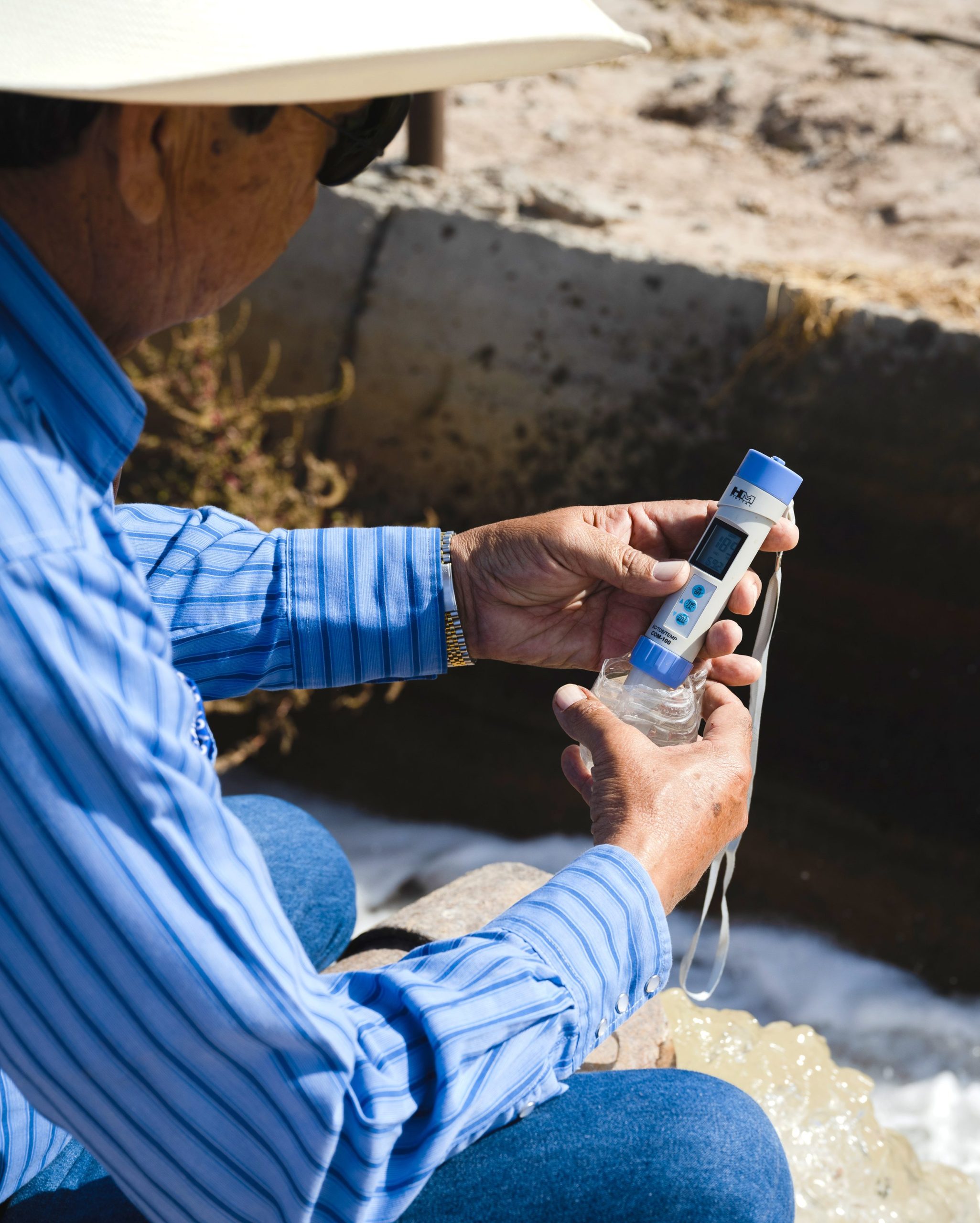
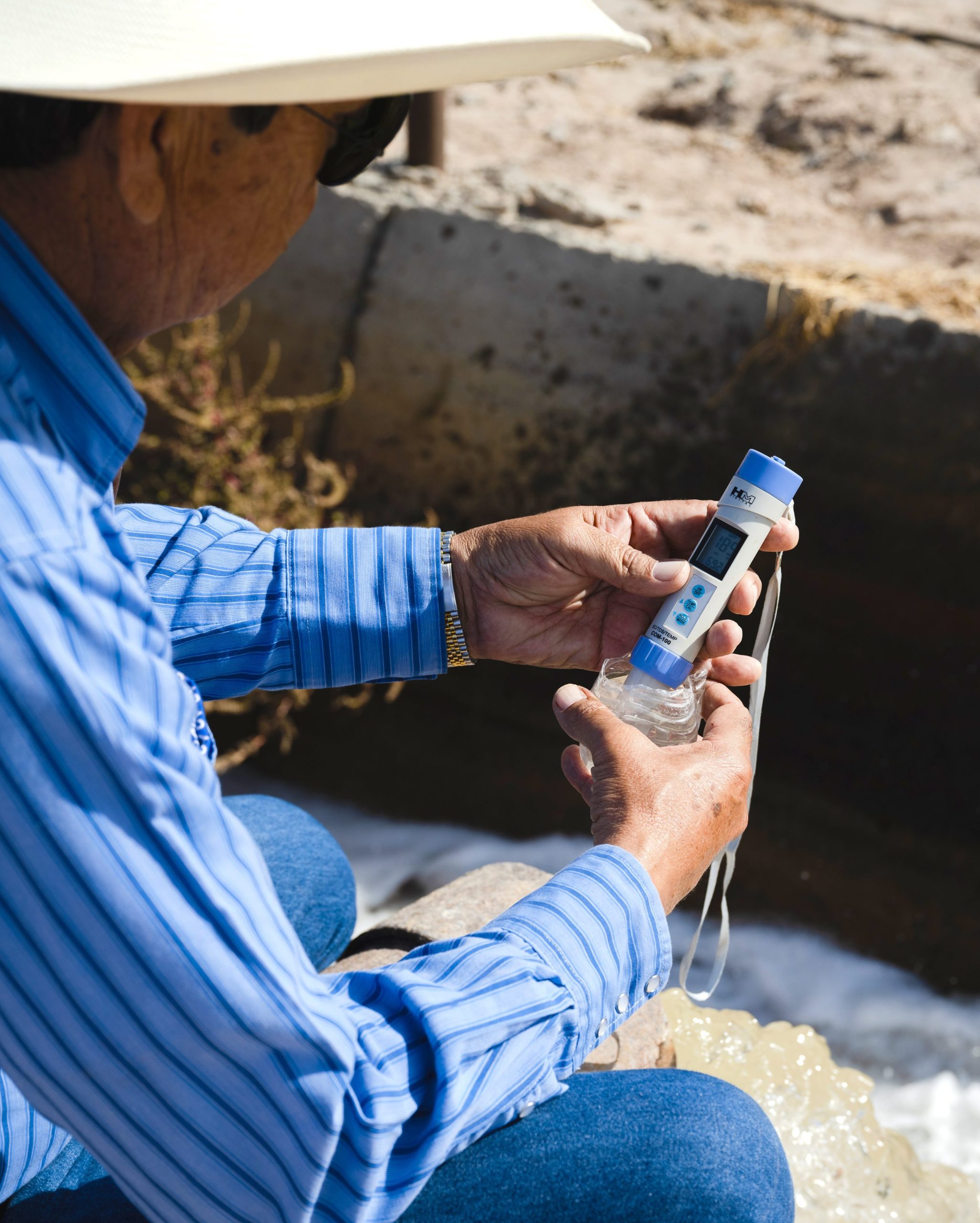
JUSTIN HAMEL
Wells scattered throughout Ramon Tirres’s fields supplement what he gets from the river. The water is more expensive, but during a drought, it saves both his crops and his livelihood.
He shakes his head as he watches the small screen, where the numbers are ticking up. The meter, which measures salt content by detecting how electricity moves through the water, reads nearly 2,400 parts per million, up from the 1,600 he measured two summers ago.
Pecan trees, in particular, can be harmed by too much salt, growing scraggly and producing less fruit. Tirres has noticed a few trees on the edges of some of his groves looking a little worse for wear. He’s worried—if the groundwater gets too salty, he won’t be able to use it for his crops.
The Hueco Bolson holds about 10 million acre-feet of fresh water and about three times as much brackish, or semi-salty, water. Every time a pump switches on to retrieve fresh water, saltier water moves closer to the city.
Pumping from El Paso has actually reversed the area’s natural flow of groundwater, which used to move from north to south, following the Rio Grande. Groundwater moves slowly, on the scale of decades, but if farmers and larger water users in the city continue to pump as they have been doing, the brackish water could eventually eclipse what’s left of the fresh water, leaving wells all over the area useless.
Before that happens, El Paso is trying to put some of that brackish water to use.
Using salt water for much of anything used to be next to impossible. But reverse osmosis and other filtration methods developed in the 20th century created new possibilities.
Desalination, pulling salt out of water, accounts for a small but growing fraction of human water use worldwide. Global capacity tripled between 2005 and 2018, and today nearly 300 million people get some of their water from desalination plants. Most are near the sea: about 60% of desalination is done with seawater, and nearly half the world’s desalination capacity is in the Middle East and North Africa. But in 2007, El Paso opened the world’s largest inland desalination plant to make use of the brackish water in the Hueco Bolson aquifer.
“We’re an on-demand plant,” says Art Ruiz, the facility’s superintendent, as we walk into the control room, where monitors display flows and pressures and pump speeds. Through windows on the far wall, I can see the entire $90 million facility, housed in a building not much larger than a high school gymnasium. Orderly pipes and pumps line one of the walls underneath an oversize American flag. A dull hum is the only clue that the plant is running.

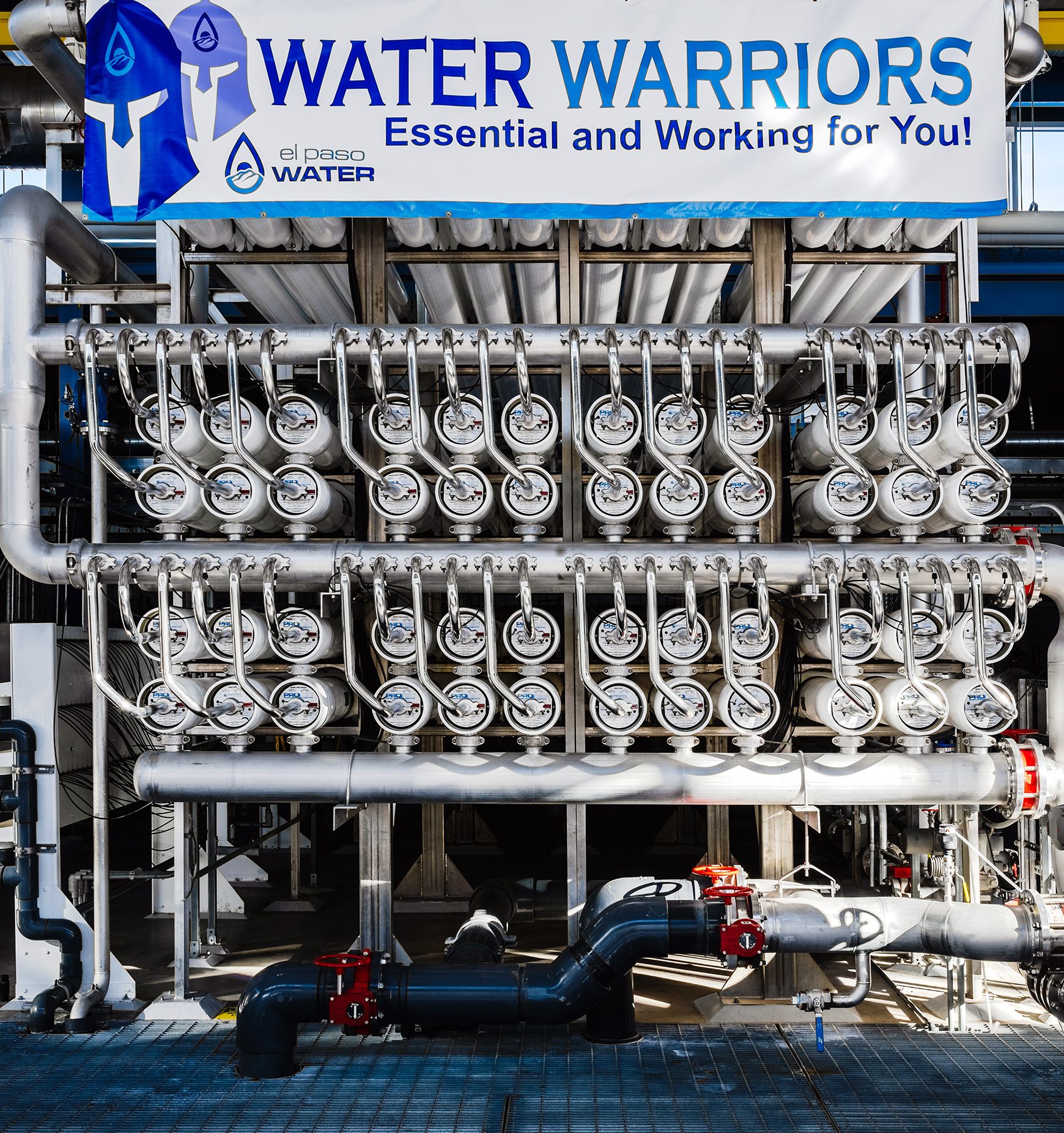
JUSTIN HAMEL
By on-demand, Ruiz means that the desalination plant can increase its output to take the edge off during the highest-demand days, like summer scorchers, or holidays like Christmas, when everyone is home and turning on the taps. If the facility were running full-out, it could produce over 27 million gallons per day of fresh water. But most of the time it does much less, accounting for about 5% of the city’s annual water needs, which range from 85 million to 145 million gallons per day.
The system uses reverse osmosis: brackish water is forced through a membrane with openings so small even salt can’t make it through. It’s an expensive process. While pumping fresh water out of the ground and disinfecting it costs about $250 per acre-foot, desalinating brackish groundwater blows the price up by nearly three times, to about $700.
Despite the cost, desalinated groundwater has become a critical part of the city’s water portfolio—and an important contingency plan for the future. The desalination plant is one of two major infrastructure projects El Paso has undertaken to make its water supply more resilient to drought, and the second is arguably even more ambitious.
More water managers are looking at wastewater and seeing a valuable resource—once it’s cleaned up, anyway. New wastewater recycling plants are being developed across the American West, most notably a potential multibillion-dollar project in Southern California planned for around 2030.
El Paso is unlikely to run out of water in the coming decades. Water may just keep getting harder to pull together, and more expensive as a result.
El Paso has been treating and recycling some of its wastewater for decades, using it to water grass in parks and golf courses, or to cool machines at factories and power plants. Today, most gets injected back into the aquifers. But Gilbert Trejo, the chief technical officer at El Paso Water, has an even grander vision.
Direct potable reuse, often referred to as toilet-to-tap recycling, is the pinnacle of wastewater recycling. Wastewater from showers and sink drains and, yes, toilets is collected and treated as it normally would be: after solids are separated out, the water is disinfected with chlorine. Then it goes through additional processing, getting filtered and cleaned with chlorine again and disinfected with UV light before being piped back out to be used in kitchens, bathrooms, and gardens across the city.
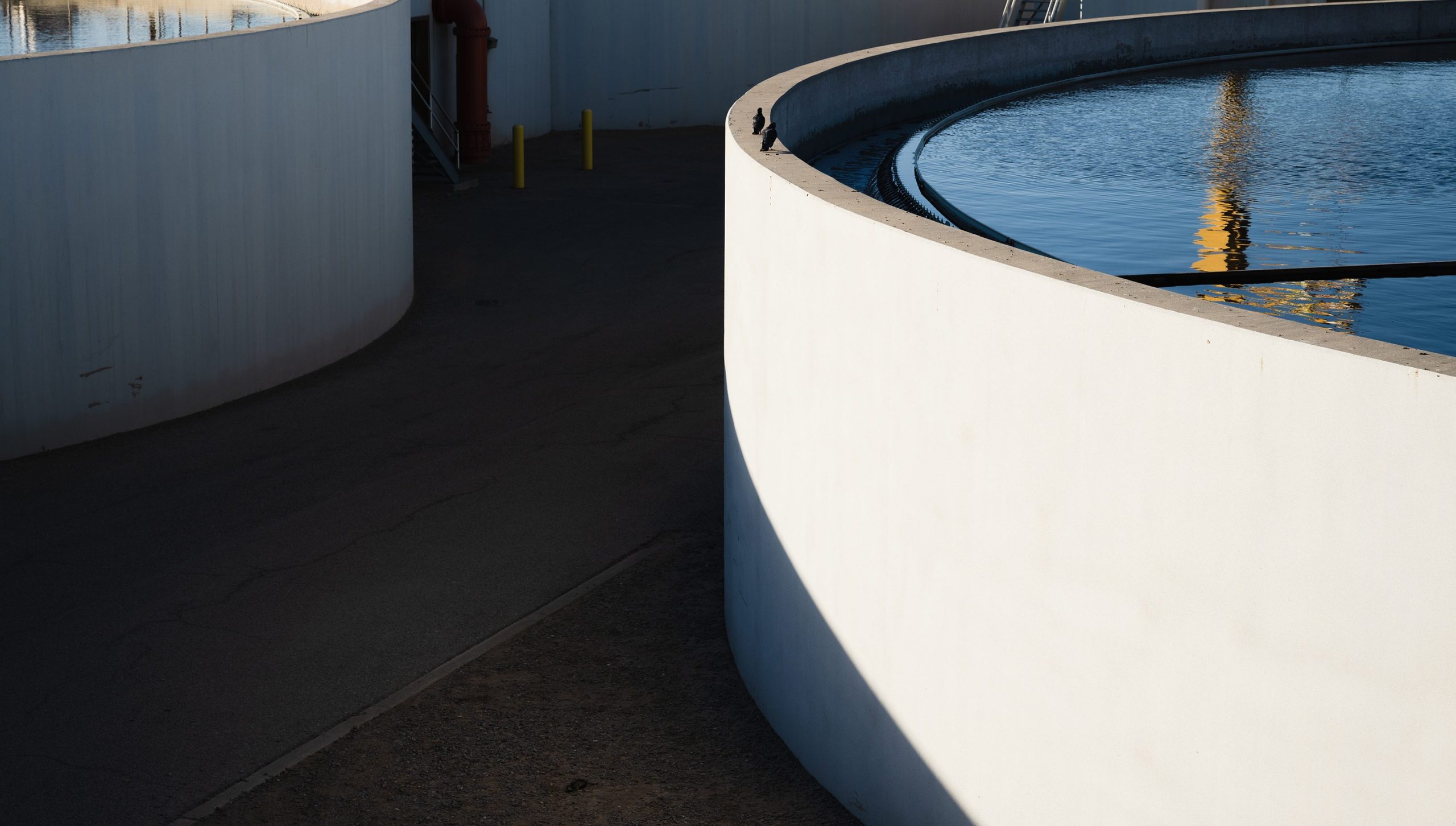

JUSTIN HAMEL
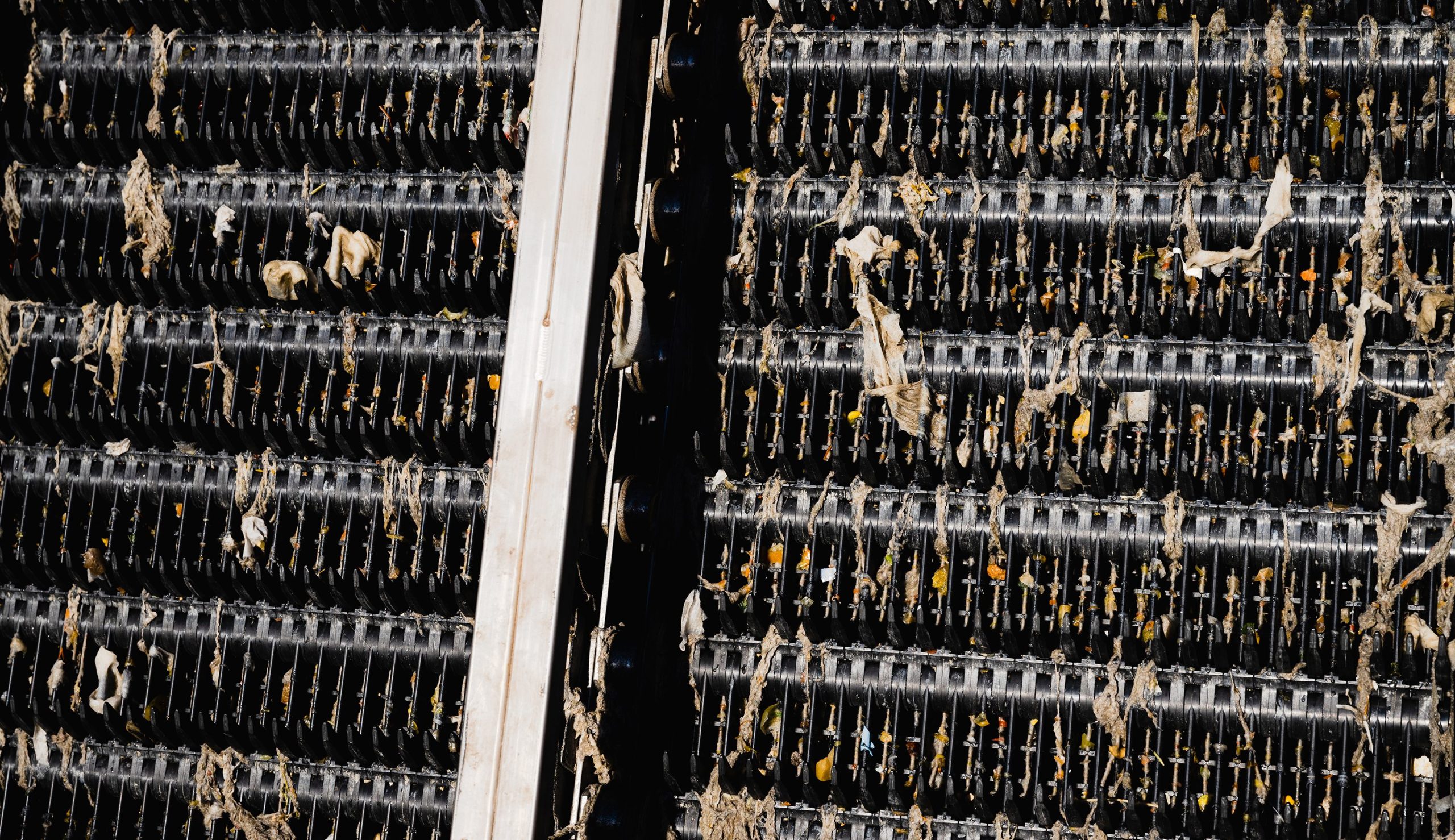
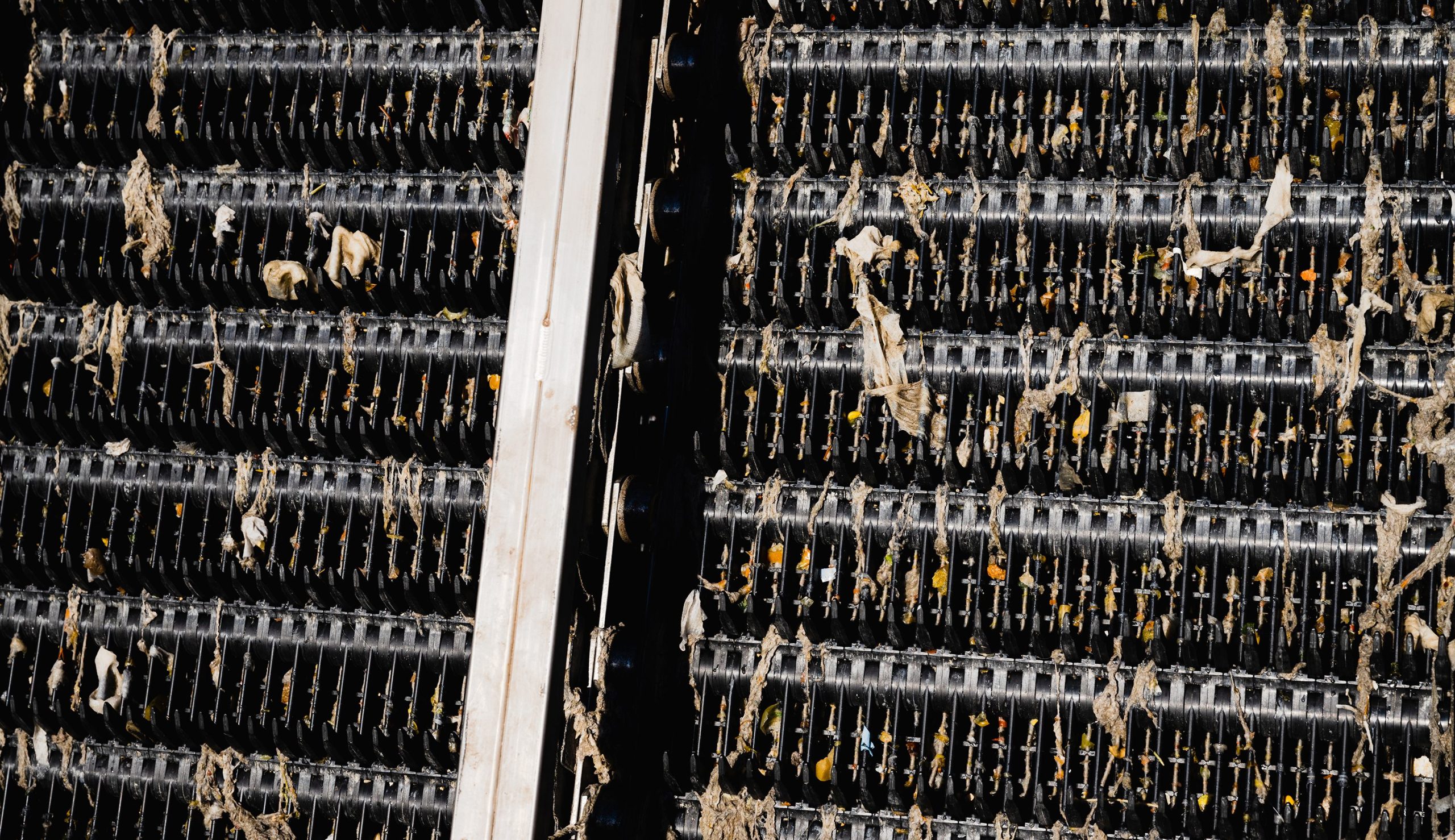
JUSTIN HAMEL
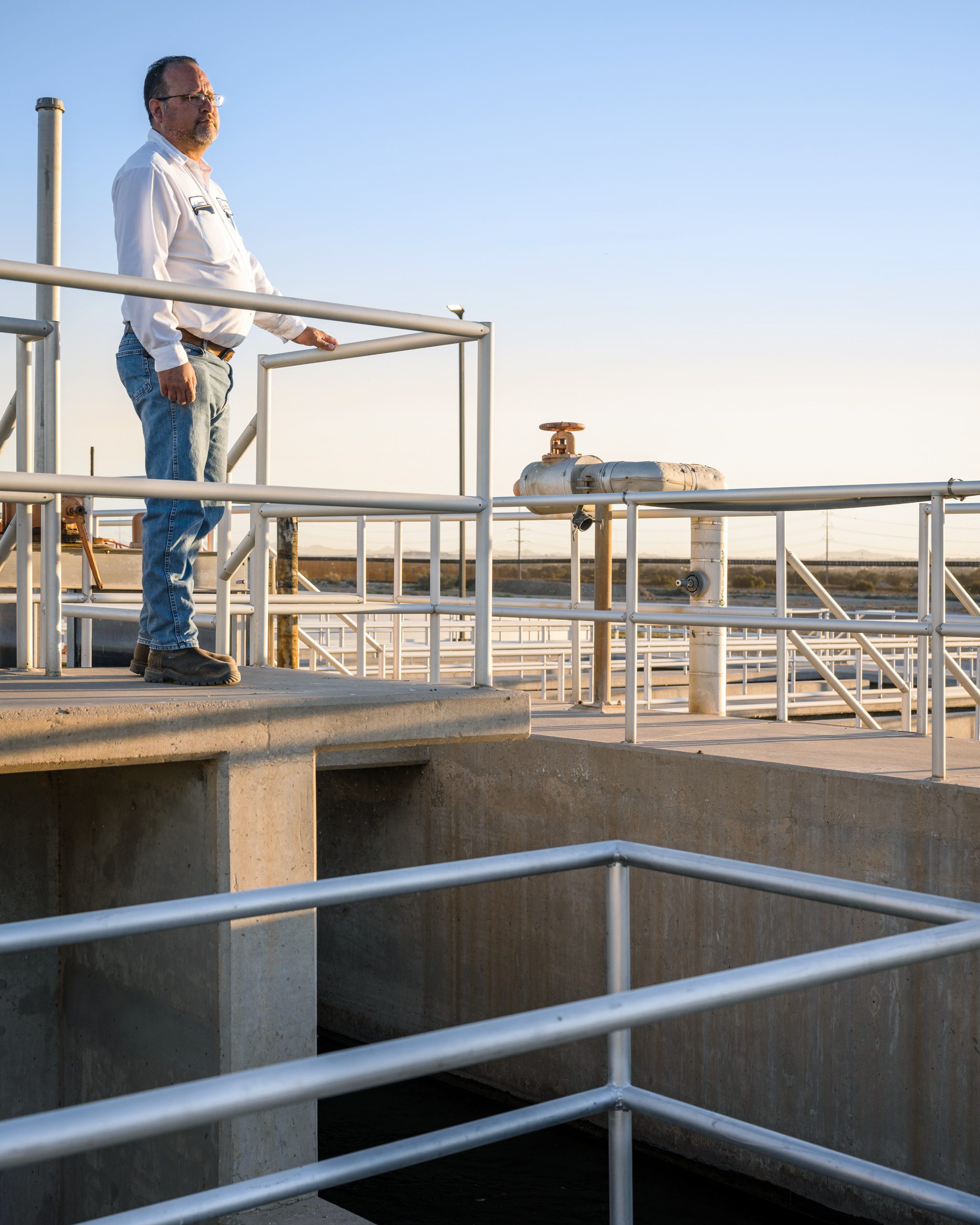

JUSTIN HAMEL
The city already uses wastewater on parks and golf courses—after the “organic matter produced by residents” is removed, as Art Hernandez, deputy superintendent of the RR Bustamante Wastewater Plant, delicately puts it.
Most water recycling today passes water through a natural source like a lake or river; few sites in the world employ direct potable reuse. A site in Namibia is the longest-running and largest. El Paso is now designing a plant that would be the largest such facility in the US. It should come online in 2025 and is likely to cost about $100 million, Trejo says.
Trejo hopes the new plant will provide another stable water source and help take the burden off the aquifers when the river runs low. Residents are largely accepting of the idea—if they object, it’s often not to the “ick” factor but to the cost. But the plan isn’t infallible. In August, two pipes bringing wastewater to the city’s existing recycling plants broke in western El Paso.
The lines were supposed to be backups for each other—so when both broke, wastewater backed up into bathtubs and yards. With more breaks appearing in the pipes every day, the city had to find somewhere for all the wastewater to go. So they turned to the only place that could hold the millions of gallons leaking from the pipes each day—the Rio Grande.
El Paso is unlikely to run out of water altogether in the coming decades. But it will keep getting harder, and thus more expensive, to pull together as much as it needs. Though technological solutions like desalination and wastewater recycling can help, the solutions many people need will get more complex as conditions continue to worsen. Scaling them up may also introduce new risks that tend to come with relying on such highly engineered systems—such as when the city had to dump untreated wastewater meant for recycling directly into the river.
El Paso’s city officials will keep trying to plan ahead. In fact, El Paso Water is now the proud owner of about 66,000 acres of land 90 miles to the east in Dell City, Texas. The land comes with water rights, and if the city’s own resources ever fall short, the utility plans to drill wells in Dell City and pump the water back to El Paso.
Pumping the water from Dell City to El Paso and treating it would cost $3,000 to $5,000 per acre-foot. That’s at least twice the cost of wastewater recycling, and over 10 times the cost of local groundwater or surface water in the Rio Grande.
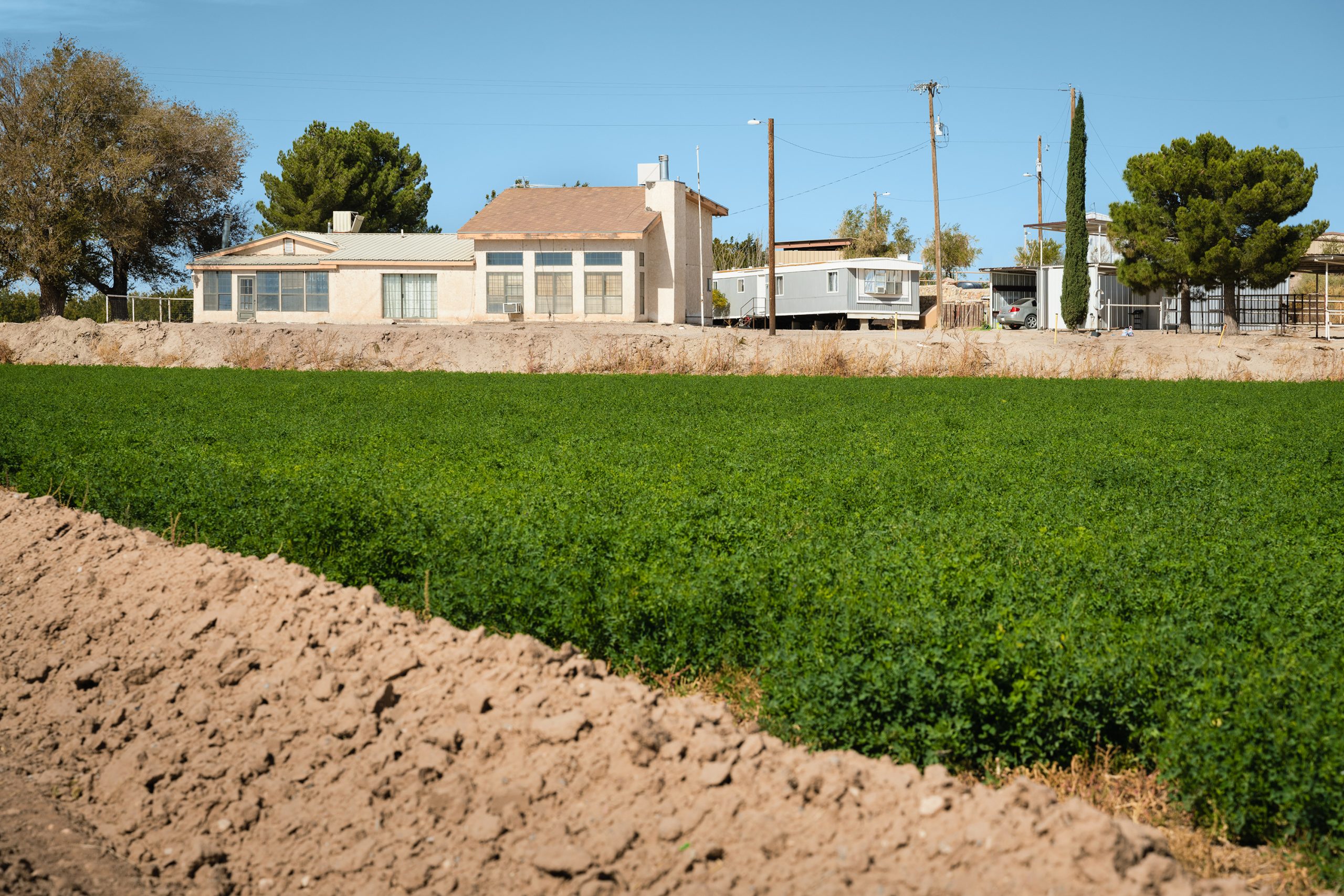
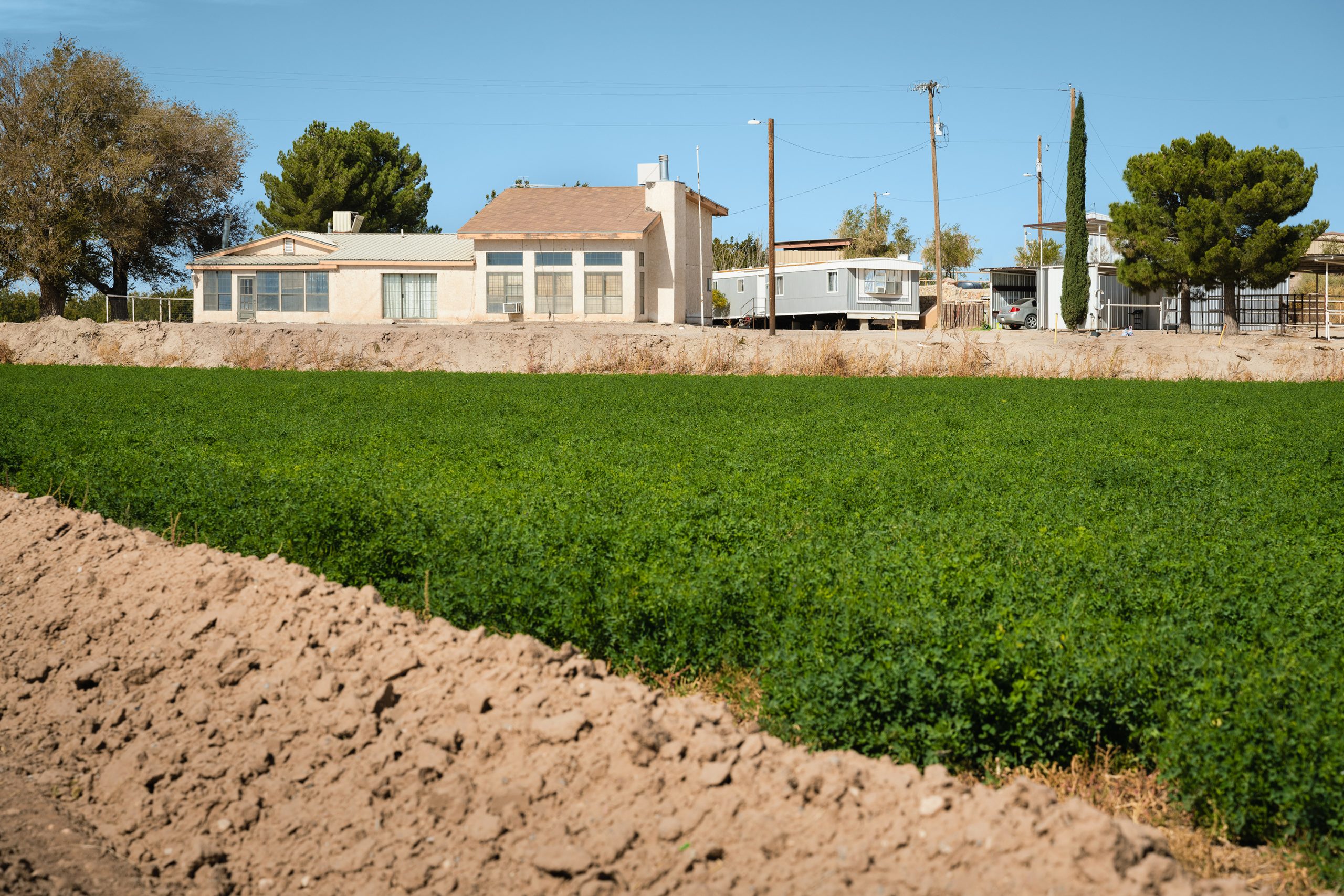
JUSTIN HAMEL
These costly solutions will likely be reflected in El Pasoans’ water bills soon. Trejo says rates already need to go up just to maintain the existing systems.
For some, the increases won’t be significant—the 2021 rate hike including water, wastewater, and stormwater fees amounts to $1.37 a month for an average user. Waiver programs for low-volume users should help people who can’t pay. About 19% of El Paso residents live in poverty, compared with about 12% nationally.
That increase was just the beginning, Trejo says. There’s been public pushback against more increases, but the agency can’t keep putting them off. “Rates in El Paso are going to get more expensive,” he says, “and they’re going to get expensive quick.”
Across the river, El Paso’s sister city Juarez may need similar infrastructure fixes and upgrades to deal with the dwindling water supply but has even less money to fund them.
Making these adjustments may seem like a small price to pay to keep water flowing in the desert. But as populations grow, droughts stretch longer, and the planet continues to warm, the task ahead can begin to look more daunting.
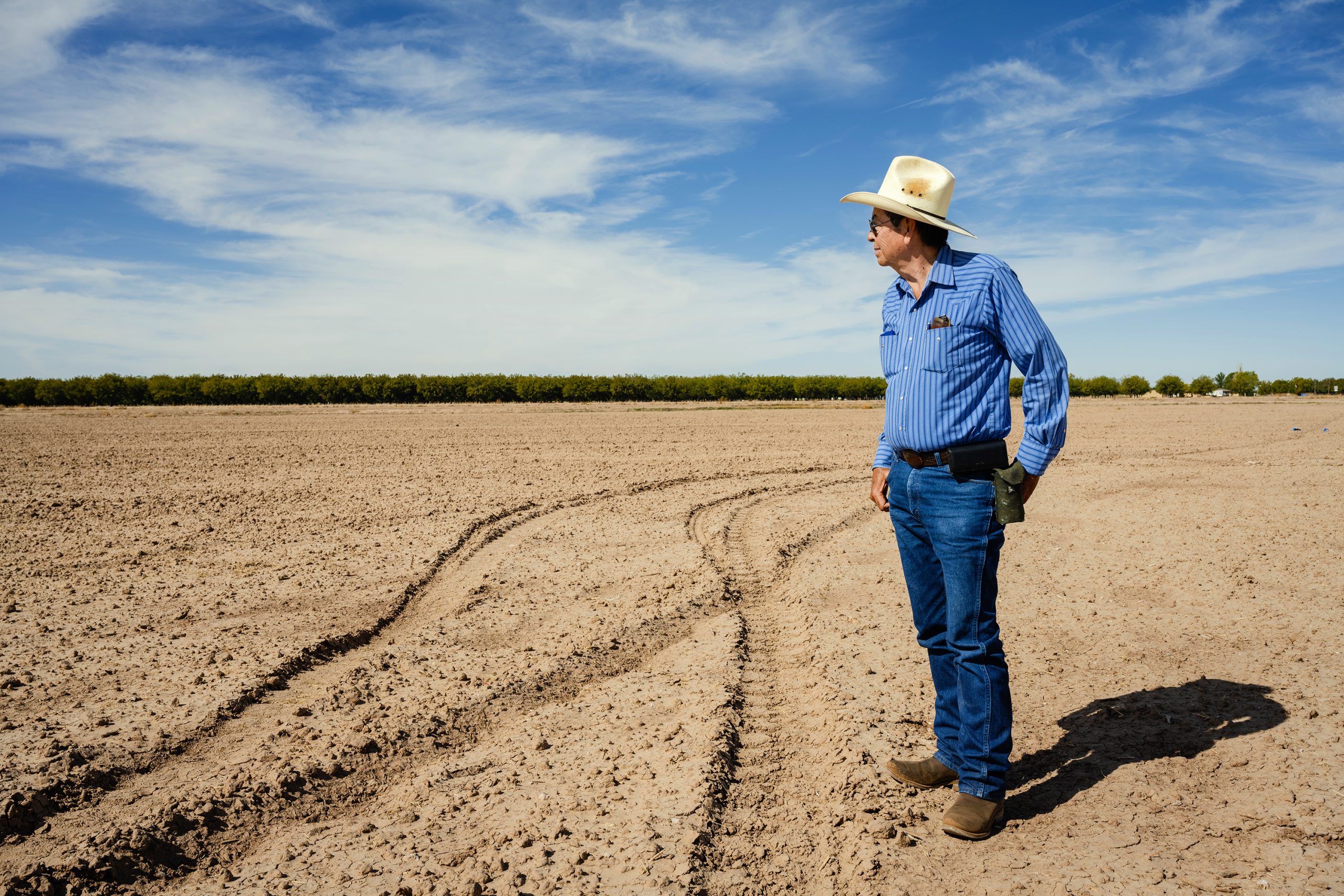

JUSTIN HAMEL
The West expects to see another year of La Niña weather patterns into 2022, which likely signals a dry winter for the region and another year with a mostly empty reservoir. People who rely on river water, from Tirres and other small farmers to officials in the city of El Paso, probably won’t get their expected allotment next year either.
Many El Pasoans will stay put despite the water woes. Tirres plans to keep farming as long as he can—it’s in his blood, he says. Farming in the desert may be getting harder, but it’s never been easy.
“Farmers have always fought this battle, forever,” he says. “You adjust to it. You have to adjust to it.”
Leave a Reply Cancel reply
document.addEventListener(‘DOMContentLoaded’, function () {
var commentForms = document.getElementsByClassName(‘jetpack_remote_comment’);
for (var i = 0; i < commentForms.length; i++) {
commentForms[i].allowTransparency = false;
commentForms.scrolling = 'no';
}
});
<!–
